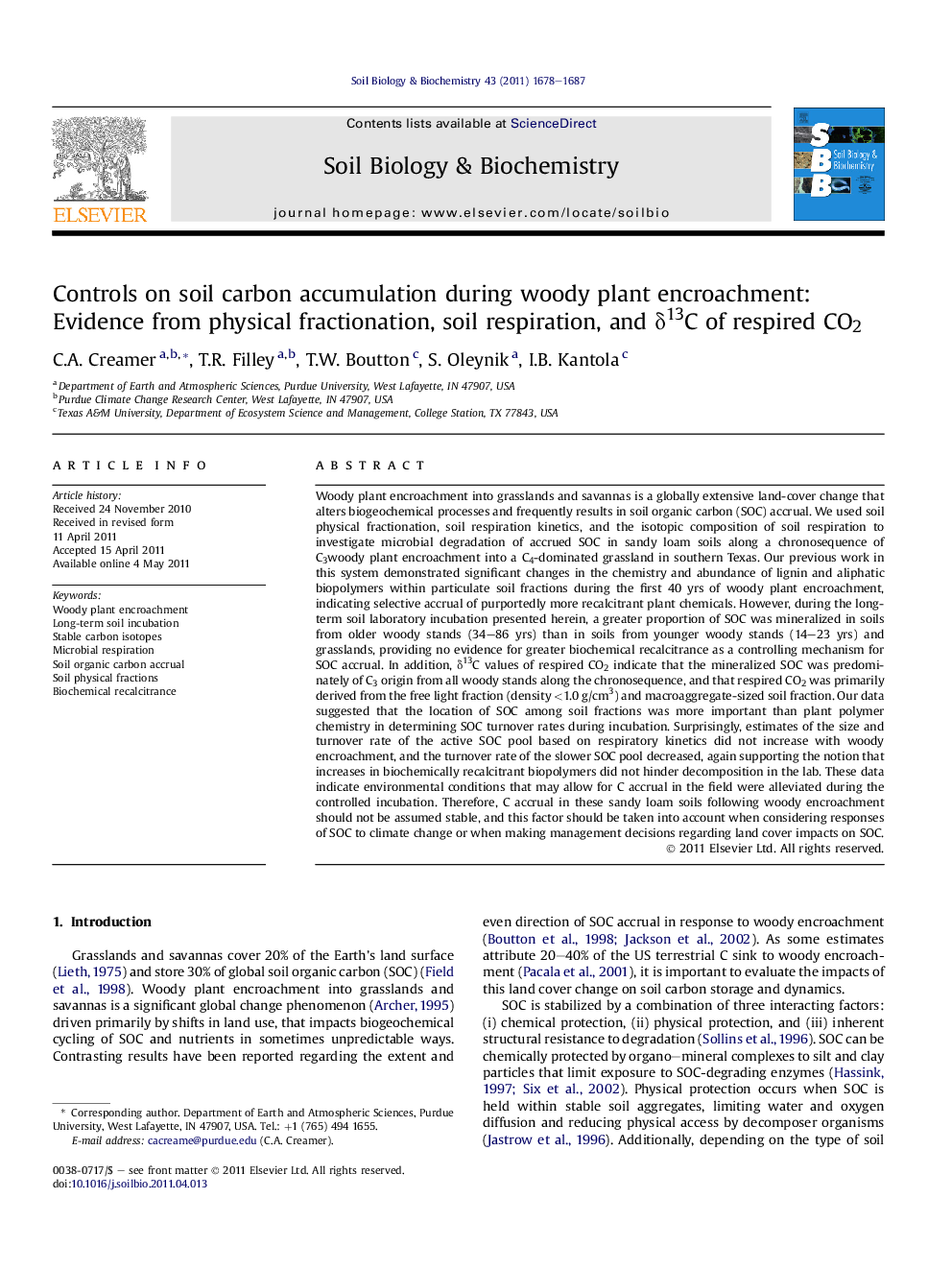| کد مقاله | کد نشریه | سال انتشار | مقاله انگلیسی | نسخه تمام متن |
|---|---|---|---|---|
| 2025106 | 1069981 | 2011 | 10 صفحه PDF | دانلود رایگان |

Woody plant encroachment into grasslands and savannas is a globally extensive land-cover change that alters biogeochemical processes and frequently results in soil organic carbon (SOC) accrual. We used soil physical fractionation, soil respiration kinetics, and the isotopic composition of soil respiration to investigate microbial degradation of accrued SOC in sandy loam soils along a chronosequence of C3woody plant encroachment into a C4-dominated grassland in southern Texas. Our previous work in this system demonstrated significant changes in the chemistry and abundance of lignin and aliphatic biopolymers within particulate soil fractions during the first 40 yrs of woody plant encroachment, indicating selective accrual of purportedly more recalcitrant plant chemicals. However, during the long-term soil laboratory incubation presented herein, a greater proportion of SOC was mineralized in soils from older woody stands (34–86 yrs) than in soils from younger woody stands (14–23 yrs) and grasslands, providing no evidence for greater biochemical recalcitrance as a controlling mechanism for SOC accrual. In addition, δ13C values of respired CO2 indicate that the mineralized SOC was predominately of C3 origin from all woody stands along the chronosequence, and that respired CO2 was primarily derived from the free light fraction (density <1.0 g/cm3) and macroaggregate-sized soil fraction. Our data suggested that the location of SOC among soil fractions was more important than plant polymer chemistry in determining SOC turnover rates during incubation. Surprisingly, estimates of the size and turnover rate of the active SOC pool based on respiratory kinetics did not increase with woody encroachment, and the turnover rate of the slower SOC pool decreased, again supporting the notion that increases in biochemically recalcitrant biopolymers did not hinder decomposition in the lab. These data indicate environmental conditions that may allow for C accrual in the field were alleviated during the controlled incubation. Therefore, C accrual in these sandy loam soils following woody encroachment should not be assumed stable, and this factor should be taken into account when considering responses of SOC to climate change or when making management decisions regarding land cover impacts on SOC.
► We incubated soils along a chronosequence of woody encroachment.
► Carbon loss during incubation was highest from established woody stands.
► Microbes degraded recent woody inputs from unprotected soil fractions.
► Carbon loss was more dependent upon its accessibility than its chemistry.
Journal: Soil Biology and Biochemistry - Volume 43, Issue 8, August 2011, Pages 1678–1687